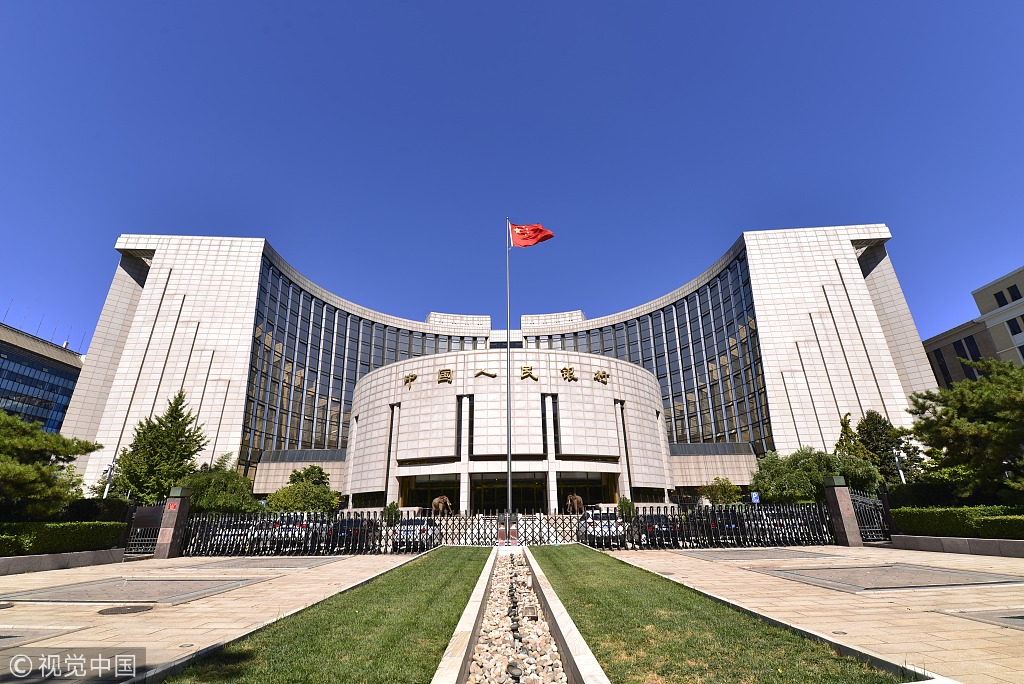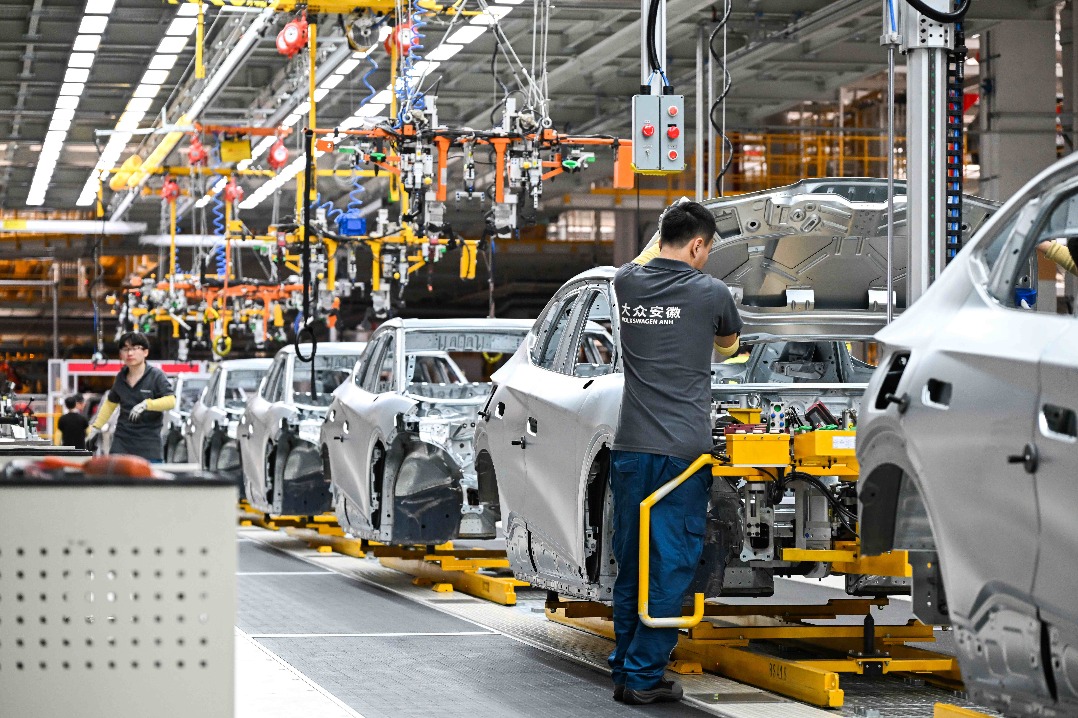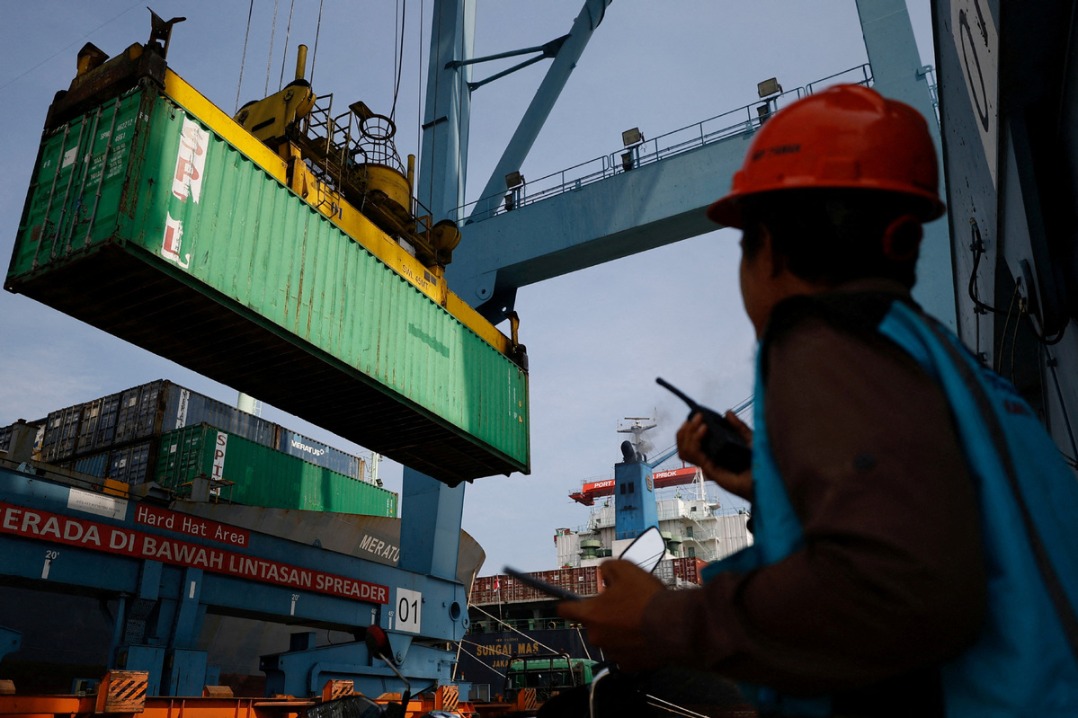Bank reserves lowered to boost economy


China's central bank decided on Wednesday to inject more than 800 billion yuan ($115 billion) into the financial sector by reducing the amount of cash financial institutions must keep in reserve. The move is designed to maintain "reasonably ample" liquidity and lower financing costs for the real economy.
The reserve ratio requirement for most financial institutions will be reduced by 0.5 percentage point on Monday, the People's Bank of China, the central bank, said in a statement. After this cut, the reserve ratio will be in a range of 6 percent to 12.5 percent, with the largest banks at the higher end.
The central bank has cut the reserve ratio eight times since early 2018 to spur economic growth. The latest move should not be seen as a change in prudent monetary policy, and it is not a "flood irrigation type of easing", according to the central bank.
The monetary authority is asking commercial banks to use the $115 billion fund to increase financial support for small, micro and private companies.
Small and medium-sized commercial banks, whose main business is lending to small enterprises, may receive more than 120 billion yuan from the reserve cut, according to estimates by economists.
Experts in the financial sector predicted the capital injection several days ago, as the monetary authority usually takes measures to hedge against potential liquidity shortages before Chinese Lunar New Year, which falls on Jan 25 this year.
Lou Feipeng, a senior economist at Postal Savings Bank of China, said the first reserve ratio cut in 2020 aims to reduce social financing costs by providing capital for the early issuance of local government bonds that will strengthen infrastructure construction. As the cut was made at the start of the year, commercial banks are able to lend more to companies and receive profits earlier.
"The reserve ratio cut is a countercyclical measure to stabilize growth and a reflection of the flexibility of monetary policy," Lou said.
Before the announcement, central bank advisers achieved a consensus in the most recent central bank monetary policy committee meeting regarding more flexible fine-tuning of monetary policy. The use of various tools is expected to keep liquidity ample and provide cheaper loans for small and private businesses, which are striving for a good start to 2020 with upward economic growth momentum.
Other measures may include lowering the interest rate of medium-term lending facilities — the price of the central bank's lending to financial institutions — so they can lend the cheaper money to small business at a lower cost.
Maintaining reasonably ample liquidity is one of the priorities of Chinese monetary policy, in light of economic downside risks and rapid changes in the global environment, the central bank said on Wednesday in a separate statement about the monetary policy committee meeting.
The committee held its fourth-quarter meeting in 2019 on Friday, chaired by Yi Gang, governor of the central bank. Committee members held that China's major macroeconomic indicators are "within a reasonable range", maintaining growth momentum with strong resilience amid external challenges.
Before the end of 2019, the announcement of a phase one trade deal between Washington and Beijing strengthened investor confidence. The latest economic indicators in China, including the stronger-than-expected manufacturing purchasing managers' index in December, also reflected positive expectations on economic performance in the new year, economists said.
In the statement, the central bank said it will "continue to pay close attention to the profound changes in the international and domestic economic and financial situation, to turn the external pressure into a strong driving force for deepening reform and opening-up".
It also said the exchange rate of the yuan is largely stable, with improved two-way flexibility and enhanced ability to sustain external shocks.
Liu Wei, president of Renmin University of China and a member of the committee, wrote in an article that the monetary policy this year is expected to be prudent, but there is a tendency toward relative loosening.
"Through cutting the reserve ratio requirement and lowering the interest rate of the medium-term lending facility and open-market repo rates, the central bank can supplement liquidity and increase financial support for small and micro businesses," said Liu, who predicted the GDP growth target of 2020 will stay above 6 percent, and the target for the consumer price index — a gauge of inflation — may be no higher than 3 percent.




































